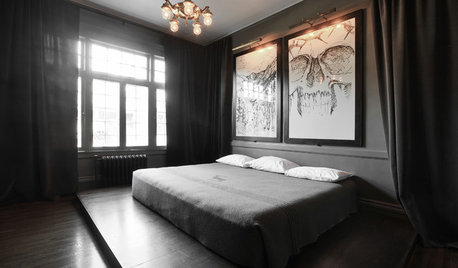New member - soil advice needed
kerwee41
14 years ago
Related Stories

REMODELING GUIDESContractor Tips: Advice for Laundry Room Design
Thinking ahead when installing or moving a washer and dryer can prevent frustration and damage down the road
Full Story
GARDENING GUIDESHow to Stop Worrying and Start Loving Clay Soil
Clay has many more benefits than you might imagine
Full Story
GARDENING GUIDESHow to Pick a Mulch — and Why Your Soil Wants It
There's more to topdressing than shredded wood. Learn about mulch types, costs and design considerations here
Full Story
HEALTHY HOMEHow to Childproof Your Home: Expert Advice
Safety strategies, Part 1: Get the lowdown from the pros on which areas of the home need locks, lids, gates and more
Full Story
LIFEGet the Family to Pitch In: A Mom’s Advice on Chores
Foster teamwork and a sense of ownership about housekeeping to lighten your load and even boost togetherness
Full Story
BATHROOM DESIGNDreaming of a Spa Tub at Home? Read This Pro Advice First
Before you float away on visions of jets and bubbles and the steamiest water around, consider these very real spa tub issues
Full Story
LIFEEdit Your Photo Collection and Display It Best — a Designer's Advice
Learn why formal shots may make better album fodder, unexpected display spaces are sometimes spot-on and much more
Full Story
FARM YOUR YARDAdvice on Canyon Farming From L.A.'s Vegetable Whisperer
See how a screened garden house and raised beds help an edible garden in a Los Angeles canyon thrive
Full Story
THE ART OF ARCHITECTURESound Advice for Designing a Home Music Studio
How to unleash your inner guitar hero without antagonizing the neighbors
Full Story
DECORATING GUIDESDecorating Advice to Steal From Your Suit
Create a look of confidence that’s tailor made to fit your style by following these 7 key tips
Full Story





wesley_butterflies
tapla (mid-Michigan, USDA z5b-6a)
Related Discussions
New member intro & pepper photos - need advice
Q
For new members: Best Advice for New Owners
Q
New member needs decorating advice
Q
Need advice on watering succulents with new soil
Q
kerwee41Original Author
tapla (mid-Michigan, USDA z5b-6a)
kerwee41Original Author
jodik_gw
tapla (mid-Michigan, USDA z5b-6a)
jodik_gw
kerwee41Original Author
tapla (mid-Michigan, USDA z5b-6a)
kerwee41Original Author
kerwee41Original Author
jodik_gw
kerwee41Original Author
jodik_gw
meyermike_1micha
tapla (mid-Michigan, USDA z5b-6a)
justaguy2
meyermike_1micha
jodik_gw